
|
990101 : A
Microflare in the corona
Here we see a New Year's microflare. It's just beyond the Sun's limb
but nevertheless shows a bright blob evolving. Closer examination
reveals that the bright blob, on mere geometrical grounds, could be the flaring
loop top seen in a favorable orientation. |

|
990108 : Two
contrasting coronal holes, one with a whorl
The contrast between these holes can be seen by comparing the structure
within them. One has little structure whilst that with the whorl
has a lot. Transequatorial loops appear to connect this hole to a
cusp lying in a Southern hemispheric active region. |
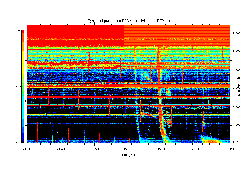
|
990115
: Apparent eruption near disk center, 11-Jan-99
The extensive changes of this region accompany a C class flare as measured
by GOES. An extremely hot S-shaped spine is seen as well as loop
expansions. These signify a coronal mass ejection in an Earthward
bound direction at speeds of around 600 km/s. |
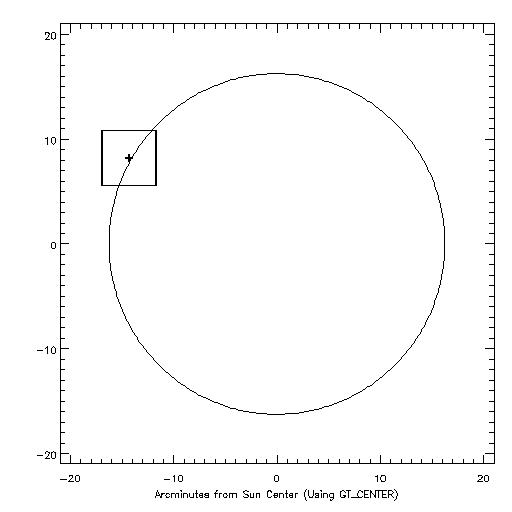 |
990122
: Motion and footpoint brightening in an M flare, 20-jan-99
SXT shows the pre-cursor to an M class flare that originated from a large
arcade on the northeast limb. The intense brightness of the arcade
triggered SXTs flare mode and so we have movies of the pre-flare loop and
footpoint brightening available for examination. |

|
990129
: Motion in flare loops
SXT takes three different (quarter, half and full) resolution movies of
a flaring region. It demonstrates flow through loops as well as loop expansion
and a change in curvature of the complicated loop structure. See previous
nugget for more information on flare motion. |

|
990205
: What holds an arcade up?
Why doesn't the thermally unstable arcade collapse rather than form a hollow
cylindrical structure? Is there pressure from within the hollow in
the form of a flux rope? And what is special about the slow flux
rise prior to the impulsive flare sequence? Some suggestions. |

|
990212
: Jets in giant interconnecting loops
We see the existence of jet-like flow in a giant transequatorial interconnecting
loop. It seems that the energy release mechanism, magnetic reconnection,
occurs firstly near the footpoint (rather than the top) of the loop in
order to allow the observed flow to happen. |
 |
990219
: Transequatorial loops, The Movie
A giant interconnecting loop associated with a flaring region shows a great
deal of restructuring as we follow it across the solar disc. It shows
many other interesting phenomena, following in the theme of the previous
few nuggets. |
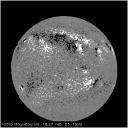 |
990226
: High latitude activity
This intricate high latitude region is examined via magnetograms and standard
SXT images. The bent loops seen here often signify eruptive regions,
however sometimes the region may flare quietly without a significant CME. |
 |
990305
: A compact beginning for a coronal mass ejection
Here we see a flare associated with a slender sigmoidal region. The
sigmoid appears to flicker on and off according to some strange loop excitation.
Is this due to some correlated emergent flux, or does it represent tether
cutting and reconnection of magnetic field lines? |
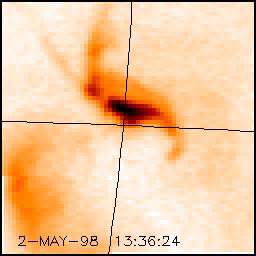
|
990312
: Impulsive X flare, retrospective
Unlike in radio or Extreme Ultra-Violet bands, soft x-rays haven't been
able to detect coronal waves due to large disturbances like X-class flares.
Here we see the flare erupting in an interesting fashion, non-vertically
and spawning a sinuous horizontal jet. |
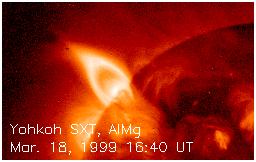
|
990319
: A magnificent cusp
This SXT data covers the evolution of this beautiful cusp following a CME.
Coronal dimming is observed along with an interesting structure beneath
the cusp. Can these informative observations be reconciled with current
theory? |

|
990326
: Cusp and CME
Comparative data shows that CME occur quite often, with and without cusp
like remnants. It appears they are also appreciably separated in space
and time, clear from the orientations of each and the time delay
before the appearance of a cusp following a CME. |

|
990402
: Flare eruptivity as observed by SXT
The correspondence between observed phenomena helps identify the cause
and effect surrounding CMEs. Not all CMEs are associated with flares
and not all flares produce CMEs. This nugget considers the statistical
trends in a sample of 140 flaring events. |
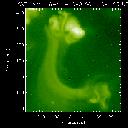 |
990409
: Trans-equatorial loops
The evolution of magnetic loops sometimes involves them emerging, growing,
breaking and reconnecting with other open field lines. This nugget
discusses whether it is this reconnection that is the likely mechanism
by which trans-equatorial loops form. |
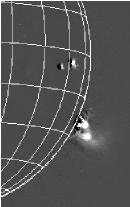
|
990416
: A CME without a long lasting X-ray event
This event emphasizes the theme of the past few nuggets. The distinctly
brief ejection event seems to be in fact associated with a very faint LDE,
however the resulting CME is highly collimated, a characteristic that may
determine the true nature of the event. |

|
990423
: What's in a coronal notch?
This notch persists between a horizontally lying loop and the large active
region. It is associated with the strong core fields of the active
region which do not radiate SXT visible X-rays, nor in cooler temperatures
it appears. Some explanatory conclusions are drawn. |

|
990430
: Striking similarities and intriguing discrepancies
A comparison between extreme Ultra-Violet and X-ray images (from EIT and
SXT respectively) is made of an active region on the Sun's limb.
SXT faintly sees some of the relatively cool 'linear rays' emanating from
the surface that the EIT picks up. |
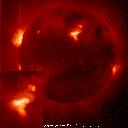
|
990507
: S shaped active regions and the prediction of CMEs
The observation of a region with sigmoidal (S-shaped) morphology led to
the prediction of an imminent CME. The region did indeed produce
a halo CME, however, the event deviated from the Long Duration Event
(LDE) format associated with most CMEs. |
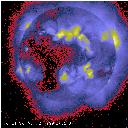
|
990514
: Curious if not spectacular N-S loop phenomena
Again trans-equatorial loops are addressed as the evolution of a N-S loop
is observed. The two low-lying and oppositely pointing cusps form
an 'X 'geometry and show flow along their lengths. They reconnect
with one another later in the week. |
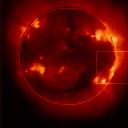
|
990521
: Plasma ejection and flow
This active region flares twice in a highly channeled manner. The
first flare sends ejecta preferentially along narrow field lines impacting
in the North. The plasma then follows two different directions, presumably
following a more complex field pattern. |

|
990528
: The birth of an anemone, with flashes
A region with the appearance of a sea anemone shows periodic flashes borne
out of tiny emergences of magnetic flux into the corona. The anemone,
whilst reluctant to interact with its surroundings, produces 20 or so flashers
in its life. |
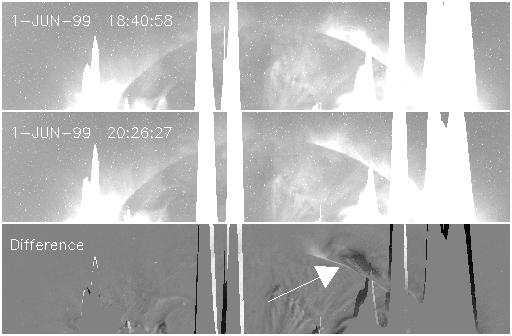
|
990604 : Two
solar cannons. Two clean misses!
Here we observed the complete absence of a trans-equatorial
loop between two highly sigmoidal regions which eventually flare, producing
CMEs, both of which miss the Earth. This points towards the formulation
of a predictive tool regarding CME events |
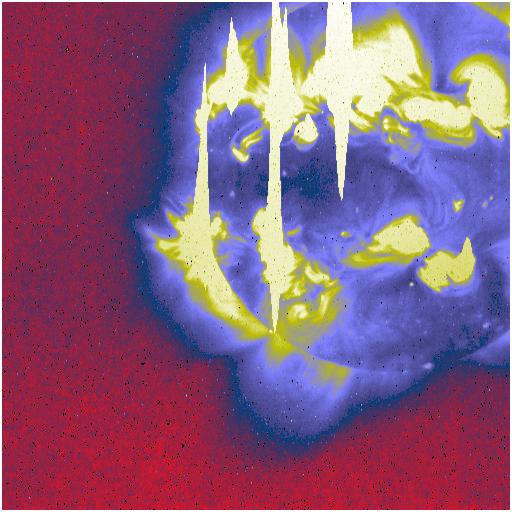
|
990611 : Yohkoh
dares to offpoint!
To look high above the solar limb, the axis of the
Yohkoh satellite was pointed far away from its usual spot, the center of
the Sun. The rather scary procedure (from the point of view of spacecraft
operations) offpoint was a scientific success. |
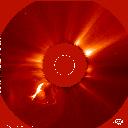
|
990618:
A beautiful arcade following an eruption
Polar crown filaments look like the fringe of hair
around the bald friar's head. When this polar crown filament erupted,
a very extended arcade of coronal loops was left behind in the vicinity
of the solar South pole. |
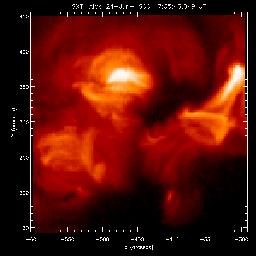
|
990625: Yohkoh and
TRACE find "moss" on the Sun
During the flight of the SERTS rocket, a region on the Sun was observed
simultaneously with the Yohkoh and TRACE spacecraft. The results
show that even on the Sun, moss likes to grow in "relatively cool"
places! |

|
990702: What's hot
and what's not!
We've been intrigued recently with the S-shaped X-ray loops we call sigmoids.
This week we compared what we see with SXT versus the NASA TRACE mission
and the ESA SoHO. Things look different, for good reason! |
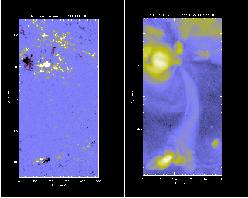
|
990709: Transequatorial
loops and magnetic reconnection
This week's nugget to discuss transequatorial N-S coronal loops, which
are believed to be very important for the solar dynamo. S.
Tsuneta suggested that loops rising from active regions could drive reconnection
and create such loops. Do this week's remarkable observations fit
this idea? |
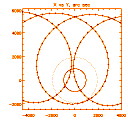
|
990716: X-ray eclipse
preview for August 11, 1999
By now Yohkoh SXT is a veteran observer of X-ray solar eclipses.
As seen from Yohkoh, the Moon executes a looping motion, counterclockwise
in our standard view (E to the left), and progressing from west to east.
It's fun to compare the eclipse from satellites in different orbits. |
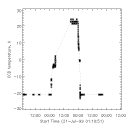
|
990723: A bakeout:
operating a camera in space
Like many space-based imaging experiments, Yohkoh/SXT has a very cold CCD
camera, which accumulates contaminants. Eventually this begins
to affect image quality. How do we cure the problem? A bakeout! |
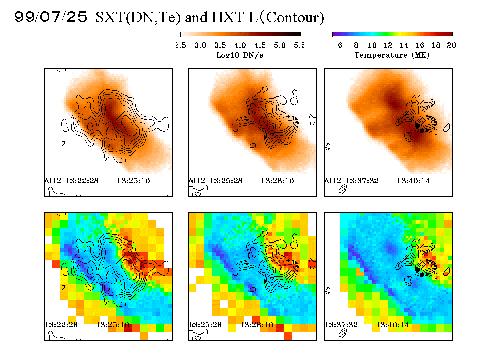
|
990730: A Lyman-alpha
"Rosetta Stone"
Lyman-alpha is the strongest spectral line of the most abundant element
on the nearest star to us, and yet prior to TRACE there had been almost
no systematic observations of flares in this line. We got a good
flare this week, with both TRACE and Yohkoh. |
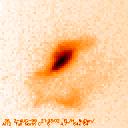
|
990806: One of the
Missing X-Flares Appears
After a drought of many months, the Sun finally came through with an "X-class"
flare (that's the biggest category) on August 2. It had a striking
"superhot" signature, evidenced by the gradual smooth decay of its brightness
and its distinctive spectrum. |
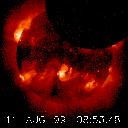
|
990813: Eclipse results
- a quasi real time success
Observing an eclipse is a tricky business, because the sensors that keep
the satellite pointed at the Sun don't work as advertised. This week
we were brave enough to promise movies of the recent eclipse to a prominent
Japanese TV program. |
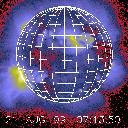
|
990820: Seeing-impaired
Folk and an Elephant
We began observations this week of an eruptive solar active region.
It appeared in such different guises to SOHO, Yohkoh, and to Big Bear Solar
Observatory that at first it seemed as though we were seeing entirely different
phenomena! |
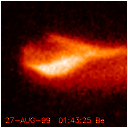
|
990827: How to catch
a wave -- on the Sun
It has been difficult for Yohkoh to see global solar atmospheric waves
of the type made famous by Type II bursts, chromospheric Moreton waves,
and coronal EIT waves. Accordingly, we have been experimenting with
a new observing program. |
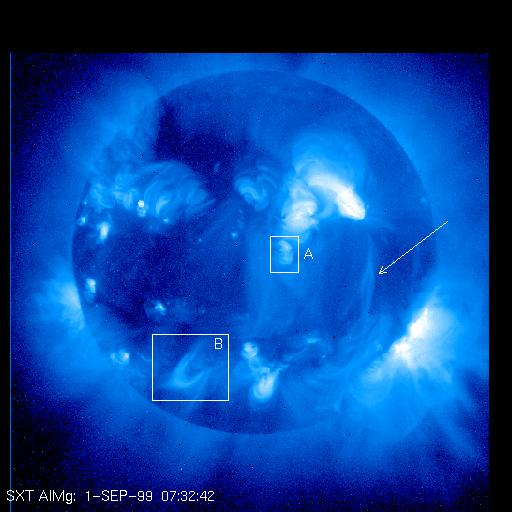
|
990903:
Large-scale disturbances
Flares at one point in the Sun's corona
sometimes trigger disturbances in the magnetic field that lead to
rather large changes when they propogate to other remote points.
This nugget contains SXT and EIT movies that show a very nice example
of this process.
|
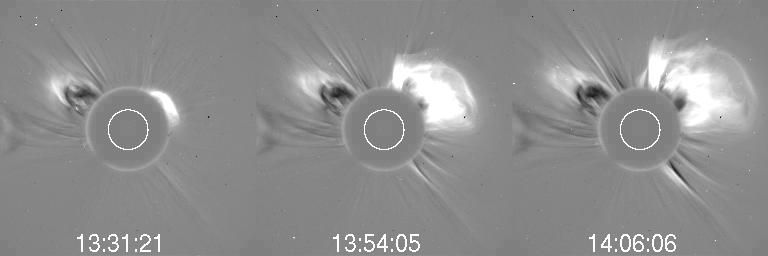
|
990910:
A well-observed CME/flare on 1999 July 25
In this nugget, data from SXT, SoHO, and TRACE are combined to show
the launching of a CME.
These spectacular movies show the gradual changes in coronal magnetic
field that are seen as the CME begins to take off.
|
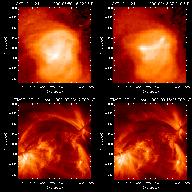
|
990917:
Hot loops and cool loops
It has been known for almost three decades that the solar corona
is comprised of closed loops.
However, when you overlay images of hot and cool loops made with different
instruments, it's hard to understand what you find.
|
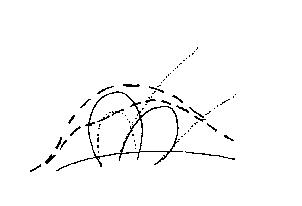
|
990924:
Coronal magnetic implosions
In the data from Yohkoh SXT we see many kinds of ejecta - things flying
away from the Sun - but very little evidence for inward motions.
Why is this?
|
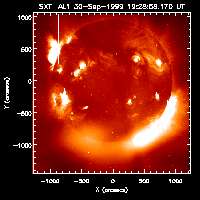
|
991001:
Cleaning up our Act
This week we go "behind the scenes"
to reveal some of the secrets of the SXT team. Those images
and movies that look so good don't start out that way!
|

|
991008:
A long-lived dark loop
SXT images show many examples of bright loops -- but here's a dark one!
What does it mean? Is something mysterious in the corona absorbing X-rays?
|
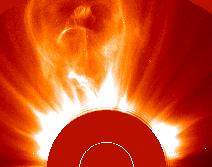
|
991015:
A fat filament and a phoenix
The experts running Yohkoh saw a solar filament gaining weight, which
led them to expect something to happen. The eruption that took place
was one of the more spectacular images on these pages -- the "Phoenix".
|
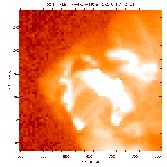
|
991022:
Murphy's Law? No, Beginner's Luck
This week an SXT observer who was just learning how to do the job
demonstrated that beginner's luck, combined with a really good approach
to joint observing, can pay off with great images of solar flares.
|
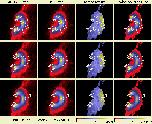
|
991029:
A Splendid Limb Flare
This well-observed strong flare occurred at apparent edge of the
solar disk, called the limb.
This allows us to see a spectacular variety of dynamic phenomena at all
X-ray energies observable with the Yohkoh instruments.
|
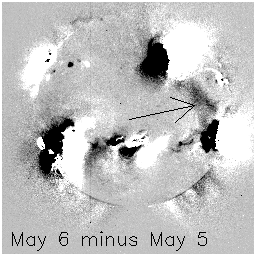
|
991105:
A TIL Fades slowly into the West
When you read this nugget, you may think that our hard-working scientists
have cracked under the pressure of daily SXT operations. They
coin the acronym TIL and build upon it to reach amusing heights.
|
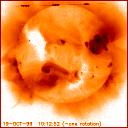
|
991112:
Preparing for our second transit of Mercury
We worked hard to prepare for this special event, only to discover
that bad luck rendered it useless for our intended purpose. Hence, we just
enjoyed the spectacle like any other astronomy enthusiast would.
|
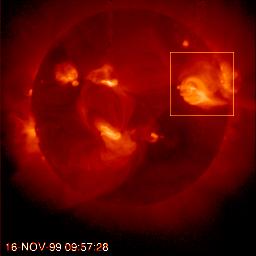
|
991119:
A CME-associated eruptive flare
The thumb-nail full-disk SXT image on the left links to an observation
that illustrates many of the phenomena of interest on these pages --
Coronal Mass Ejections (CMEs), cusps, and eruptive flares.
|
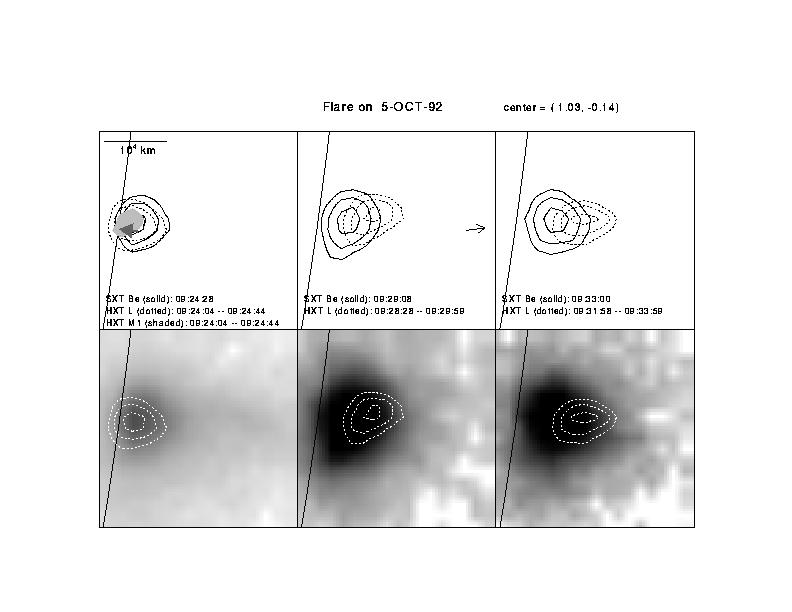
|
991126:
Yohkoh observations of superhot flares
In this Nugget, we present the results of an interesting
study of flares which are unusually hot -- many tens of millions of
degrees Kelvin. It turns out that the superhot
regions do not coincide with normal hot flare loops!
|
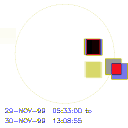
|
991203:
Yohkoh anticipating flares
It's important for Yohkoh's flare research to anticipate correctly where a flare
is going to occur. In this Nugget we show that the method we usually
use -- we watch the brightest region in X-Rays -- works pretty well!
|
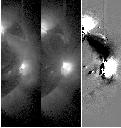
|
991210:
A fifth kind of dimming? Or a second?
Dimmings of the corona are known to be associated with CMEs, and give
important clues about the conditions that lead to them.
A new kind of dimming has been discovered, which is quite different
from those known earlier.
|

|
991217:
A CME from a Sigmoid: 17-Aug-99
This CME occurred in a region subsequently chosen as the target of an
international observing campaign, Whole Sun Month.
This Nugget includes dramatic (but huge) movies from SXT, SOHO/EIT, TRACE,
and optical observatories.
|
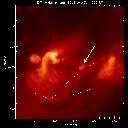
|
991224:
Filament eruption and halo CME: 9-Jun-98
Here's a great example that illustrates many of the phenomena that
can be seen when an eruption occurs near disk center,
producing a halo CME. This includes a sigmoid, a filament, and both
emerging and cancelling magnetic flux.
|
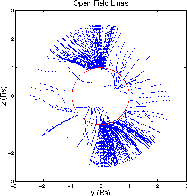
|
991231:
The Solar Wind Disappears!
The wind blowing out from the Sun past Earth is highly variable, and
its properties have important effects on space weather where many
orbiting satellites are found. In this weekly note we explore the
relationship between this wind and solar magnetic fields.
|





































































































